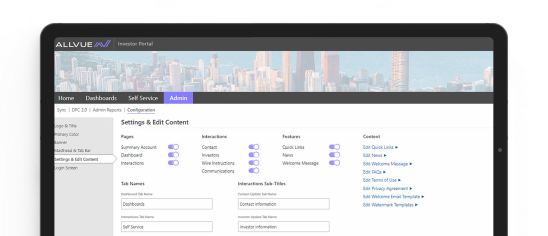
By: Megann Freston
Director of Product Marketing
April 3, 2024
Private equity and venture capital managers have pushed through a challenging few years of inhospitable fundraising, deal, and exit environments, notably just after enjoying record highs through 2020 and 2021.
While 2024 is predicted to ease the investment environment and usher in higher valuations and more investment exits, some LPs have run out of patience waiting to see liquidity for their private market investments. As such, DPI (distributions to paid-in capital) has received an uptick in attention from LPs who feel positive IRR metrics aren’t painting the full picture as they wait around for more distributions.
Ultimately, no matter the macroeconomic factors at play or the feedback from investors, GPs will need the support of a purpose-built tech stack supporting their fund operations and investor reporting to tell the full story of fund performance across DPI and a variety of other performance metrics.
Understanding DPI: A key performance indicator
DPI is one form of measuring return on investment, quantifying how much capital has been distributed back to investors relative to the capital they have contributed. By dividing the total amount of distributions made to investors by the total paid-in capital, DPI starts from zero at fund inception and ideally increases as investments come to maturity and returns are distributed to investors over the fund lifetime.
This metric is essential for investors as it provides an immediate, intuitive understanding of how their capital has been returned to them and the level of returns generated in cash terms. It differentiates itself from other performance measures like TVPI (total value to paid-in capital), which includes both unrealized value of invested capital and distributed capital. When liquidity is top of mind, it makes sense that DPI is the metric LPs look to.
However, it’s key to take the full context of the fund’s performance into account, including the timing of the fund’s lifespan, as well as other fund metrics that point to key details around how the investments have been managed to this point.
For instance, if a fund’s DPI achieves the 0.5x at the four-year mark, investors shouldn’t look to this metric in a vacuum and become worried about fund performance – so early in the fund’s lifespan, there is likely still significant unrealized value in active investments that still can come to maturity. A full reporting picture that includes other details like net and gross IRR, TVPI, and other metrics would provide important context.
Alternatively, if a fund wraps up its life at a 1.0x DPI, it would be considered a failure – its investors tied up their capital for 10-15 years only to see no return at all.

Investors’ growing emphasis on liquidity
At the end of the day, increased investor interest in DPI is a response to tighter liquidity amid a difficult fundraising, deal, and exit environment. As evidence of this trend, a Bloomberg report noted a 49% decline in payouts from major private equity firms across a two-year span. In some ways, this investor impatience is made worse by the fact that GP and LP motivations can at times be at odds with each other.
LPs are motivated for liquidity in their investments. In a time when distributions may be more conservative, DPI highlights a fund’s previous ability to generate liquidity, which can be an important factor for investors prioritizing cash flow and seeking reassurance that their investment is not only growing on paper but also actively paying back to them without ambiguity.
GPs, meanwhile, are motivated to hang on to a poorly performing investment even longer in hopes of turning it around rather than realizing a loss or a poor return. GPs also collect fees on invested capital as long as something is held in the portfolio. So, aside from investor pushback, GPs may not feel the pressure to rush an investment exit if they feel it doesn’t maximize returns.
Thus, DPI is not about presenting a snapshot of future success, but rather one metric that contributes to the big picture of a fund’s ability to generate and distribute returns over its lifespan. To accurately provide that picture, GPs require reliable and streamlined collection of and access to investment-level and fund-level data.

Meeting investor demands with comprehensive and accessible data
Allvue’s suite of solutions for private equity and venture capital managers, including Fund Accounting, Portfolio Monitoring, and the Investor Portal, is engineered to equip them with purpose-built capabilities for running their middle- and back-office operations, and ultimately reporting thorough and reliable data to their investors. These tools are designed to propel transparency to match today’s growing investor expectations.
- Fund Accounting meticulously tracks DPI and other fund metrics, updating them all with each liquidity event. Our Fund Accounting software solution brings together partnership accounting, detailed financial statement reporting, a multi-currency general ledger, cash management, and workflow standardization into one complete fund accounting system for your fund administration needs.
- Investor Portal grants investors access to customizable dashboards, secure document sharing, and best-in-class investor communication tools via our out-of-the-box private equity investor portal software solution. Key your LPs into DPI and other fund performance metrics with dedicated PowerBI dashboards.
- Portfolio Monitoring enables data collection and reporting for DPI and more than 80 other KPIs and fund performance metrics to help GPs report insight into the health and success of their investments at the portfolio-company level and the fund level. Our best-in-class system automates and streamlines the data collection process, provides one place to centralize your proprietary data, and offers flexible tools to simplify your reporting and analysis.
Embracing advanced tools for fund performance tracking, such as DPI and other metrics, empowers GPs to meet the demands of modern LPs for immediate and actionable insights. This proactive approach to data management and reporting fosters a culture of transparency, ensuring the private equity and venture capital industries remains aligned with the core values of responsiveness and investor engagement.
Want to see Allvue’s private equity software suite in action? Check out our microdemos here or request a live demo personalized to your needs and challenges.
More About The Author

Megann Freston
Director of Product Marketing




